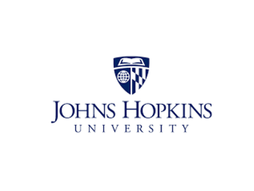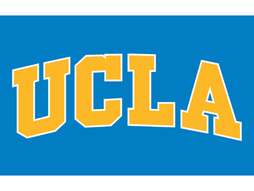8 Tips to Help You Win the NASA Langley Student Art Contest
One of the best ways that you as a high schooler can highlight your knowledge, motivation and critical thinking to a college admissions officer is by showcasing your participation (or victory!) in relevant pre-college challenges and competitions. This is doubly true if you can add your submission or work to your profile, like your art, and highlight it directly. If you’re a high schooler gifted with both a flair for the arts and a passion for STEM, then today’s blog post is for you.
We’ll be discussing what makes the NASA Langley Student Art Contest a unique learning experience and a few tips to help you ace it.
What is the NASA Langley Student Art Contest?
Hosted by NASA’s Langley Research Center in Hampton, Virginia, this contest invites K-12 students to express their vision of the future in science, aeronautics, and exploration.
The NASA Langley Student Art Contest’s theme for 2024 is “Connect the Dots”, encouraging you to recognize and explore the relationship between art, science, and technology that exists all around you.
This free-to-enter challenge is an excellent opportunity to showcase your creativity while incorporating your understanding of NASA’s efforts in space exploration.
Is it prestigious?
The NASA Langley Student Art Contest attracts entries from hundreds of talented students from across the United States, with the last three years seeing between 700 to 1200 entries.
Of these, only 4 entries per grade are awarded, and there is only 1 grand prize winner. This means less than 0.1% of entries end up winning (!), and this could be you!
Aside from accolades for winners, even participating here provides some visibility as all entries are hosted on NASA Langley’s Flickr. All of this means that should you manage to win in your grade, or even potentially the grand prize, it will doubtless be a mark of distinction on your profile. However, since there is no tangible benefit associated with the awards or the competition itself, the prestige value is limited.
Who is eligible to apply?
The NASA Langley Student Art Contest is one of the most accessible art challenges around, with only two requirements. To be eligible, you must:
Be in grades K-12.
Be attending public, private, parochial, or homeschool in the United States.
Children of U.S. military members stationed overseas are also eligible.
How does the application process work?
While the contest only involves artwork submission and is therefore fairly straightforward, here are the things you should keep in mind:
Your artwork must be original and made by hand, with no use of AI or digital image generation of any kind.
Original digital artwork is allowed, as long as it is purely your own creation.
You can only submit one entry.
Your artwork should be submitted as a high-resolution (minimum 2400 x 2400 pixels) .jpg or .png file under 5MB.
The submission period begins on December 1, 2023, and concludes on December 31, 2023, at midnight EST.
The submission itself must be made by a parent or legal guardian, or by a teacher with a signed permission form.
How is the NASA Langley Student Art Contest structured?
You'll be working on an art piece that reflects the theme “Connect the Dots.” Your deliverable is a creative representation of your vision for the future in science and exploration.
The artwork can be:
A drawing - pencil / charcoal / colored pencils.
A painting - oil paints / acrylic / water media.
A form of mixed media / collage.
An original digital creation.
NASA helpfully provides some inspiration to help get you started:
Explore flight.
Explore Earth.
Explore Moon to Mars.
Judges will evaluate your entry based on:
Originality
Interpretation of the theme
Creative techniques
Overall art appearance
The judges will award First, Second, Third place, and an Honorable Mention for each grade level, along with one Grand Prize Winner overall.
What kind of artwork are judges looking for?
There is a fair bit of variety in the submissions to the contest, and you can check them all out on the NASA Flickr Art Gallery yourself. Here’s some of our favorite work:



8 Tips to Win
Embrace the theme 'Connect the Dots': Dive into NASA's current projects and future missions to understand how they 'connect the dots' in science and exploration. Reflect this understanding in your artwork. Explore NASA's missions and projects for inspiration.
Study previous winners' artworks: Analyze the artworks of past winners in the NASA Langley Student Art Contest. Notice how they interpreted the themes and incorporated scientific elements. Check out the NASA Flickr Art Gallery for past submissions.
Focus on scientific accuracy and creativity: While originality is crucial, ensure your artwork accurately represents scientific concepts. Use NASA's educational resources to get your facts right and blend them creatively with your artistic vision.
Get your detailing and technique right: Pay attention to the details in your artwork. Whether it's a depiction of a spacecraft or a celestial body, the precision in your drawing or painting can make a big difference. Utilize online art tutorials specific to space and science themes for techniques and ideas.
Weave a narrative through your art: Aim to tell a story through your artwork. Maybe it's about a future Mars mission or the journey of a satellite. This narrative approach can make your piece more engaging and memorable. For storytelling ideas, visit NASA's Solar System Exploration page.
Seek constructive criticism: Before submitting, get feedback from art teachers or professionals who have a keen eye for detail and an understanding of the contest's standards. Incorporate their constructive criticism to refine your artwork.
Adhere to submission guidelines: Ensure your artwork meets the specific requirements – right from the size, format, to the submission method. Double-check the contest rules to avoid any disqualification risks.
Utilize NASA's Visual Resources: Leverage the vast repertoire of images and videos available on NASA's platforms for inspiration and accuracy. The NASA Image and Video Library is a treasure trove of visual resources that can spark ideas and add authenticity to your artwork.
Wrapping Up
The NASA Langley Student Art Contest is a fantastic opportunity to showcase your artistic talents and your passion for science and exploration. By participating, you’re able to conclusively demonstrate that you have a passion for both STEM and the arts. Should you win, your skill is cemented by your work winning accolades from amongst thousands of competitors. Regardless of the outcome, you will greatly enhance your future college applications through this unique opportunity provided by NASA.
Lumiere Research Scholar Program
If you’re looking for the opportunity to do in-depth research on various topics in art, history, and media, you could also consider applying to one of the Lumiere Research Scholar Programs, selective online high school programs for students I founded with researchers at Harvard and Oxford. Last year, we had over 4000 students apply for 500 spots in the program! You can find the application form here.
Stephen is one of the founders of Lumiere and a Harvard College graduate. He founded Lumiere as a PhD student at Harvard Business School. Lumiere is a selective research program where students work 1-1 with a research mentor to develop an independent research paper.
Image Source: NASA Langley Student Art Contest






